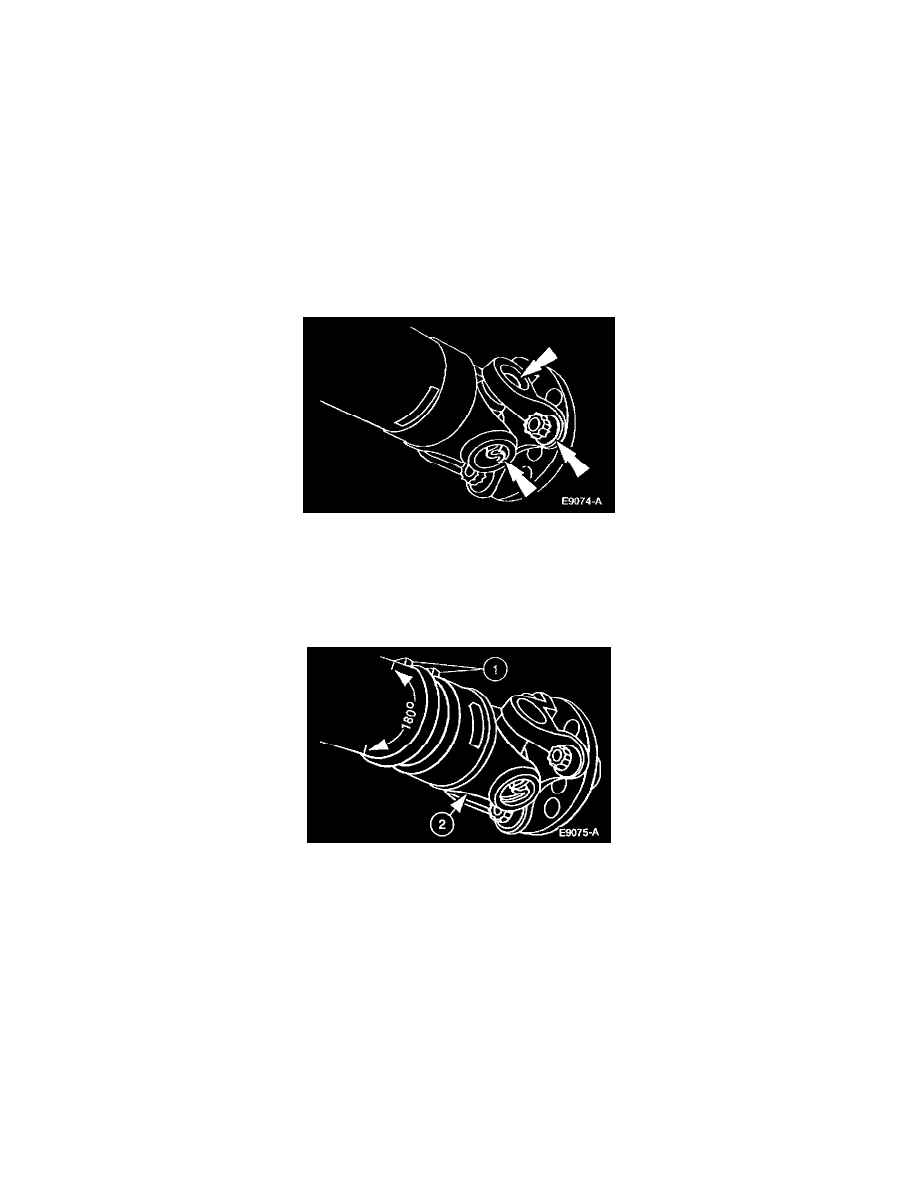F 250 4WD LD Pickup V8-5.4L SOHC VIN L (1997)

Drive/Propeller Shaft: Testing and Inspection
Runout and Balance
1. Use a twin post axle contact hoist to raise and support the vehicle.
WARNING: THE ELECTRICAL POWER TO THE AIR SUSPENSION SYSTEM MUST BE SHUT OFF PRIOR TO HOISTING,
JACKING OR TOWING AN AIR SUSPENSION VEHICLE. THIS CAN BE ACCOMPLISHED BY TURNING OFF THE AIR
SUSPENSION SWITCH LOCATED IN THE RH KICK PANEL AREA. FAILURE TO DO SO MAY RESULT IN UNEXPECTED
INFLATION OR DEFLATION OF THE AIR SPRINGS WHICH MAY RESULT IN SHIFTING OF THE VEHICLE DURING THESE
OPERATIONS.
2. Remove the rear wheels and tires. Install the lug nuts to retain the brake drums.
3. Note and record baseline speed
-
With the transmission in gear. increase the level; Note and record the speed of this vibration period as a baseline speed.
CAUTION: To prevent overheating, do not run the vehicle on the hoist for an extended period.
4. Check the attachment of the driveshaft to the rear
5. Check the driveshaft for out of balance.
(1) With the transmission in gear, run the vehicle with the driveshaft rotating 64-80 km (40-50 mph).
(2) Have an assistant barely contact the driveshaft with a marker in the rear, middle, and front end to indicate heavy spots.
WARNING: KEEP HANDS AWAY FROM THE BALANCE WEIGHTS WHILE THE DRIVESHAFT IS ROTATING.
6. Balance the driveshaft.
(1) Install two stainless steel screw-type hose clamps on the driveshaft with the clamp screws opposite the mark.
(2) Tighten the hose clamps starting at the pinion yoke end of the driveshaft.
7. Run the vehicle at the baseline speed.
